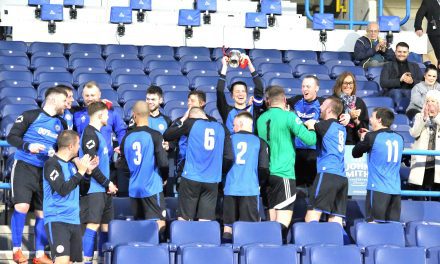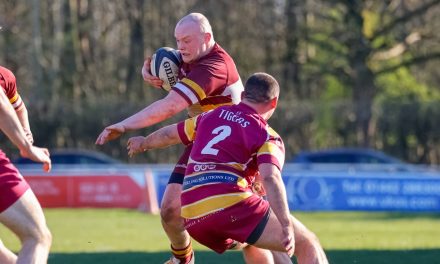Written for Huddersfield Town Supporters’ Association Heritage Project
A great deal happened on 7th January, 1922.
In the morning, a key figure in the fight for Hawaiian self-determination, and member of the deposed Kalākaua Dynasty, Prince Jonah Kūhiō Kalanianaʻole, unexpectedly passed away at the age of 50. Delegates at the Washington Naval Conference, meanwhile, agreed to outlaw the use of poison gas in warfare. And in Dublin, the Dáil Éireann narrowly voted to approve the Anglo-Irish Treaty, signalling the beginning of the end for Ireland’s War of Independence.
A busy Saturday by anybody’s standards.
But it was events at Turf Moor, home to Burnley FC, that concern us the most. For it was there, on the wrong side of the Pennines, that Huddersfield Town began their FA Cup campaign, which, four months later, culminated in a famous triumph over Preston North End at Stamford Bridge.
Background
The Clarets went into the tie as favourites, and for good reason: John Haworth’s side were reigning First Division champions, and, at the time, had gone 30 games unbeaten at home. Town, on the other hand, had endured a disappointing end to the 1920-21 season, eventually finishing 17th, and the team’s inconsistent performance in the latter half of 1921 seemed to indicate that a similar fate lay ahead.
Much has been made of this supposed mismatch, with one historian going so far as to suggest that Town’s “prospects of reaching the second round were slender.” It would be a mistake, however, to lean too heavily into the David and Goliath analogy.
Compared to today, the Football League of the twenties was tremendously competitive, not to mention unpredictable. What’s more, Town possessed several strengths that made for a relatively even contest.
For a start, the club had recent form when it came to this particular tournament. Indeed, only 18 months prior, in the same season they won promotion from the Second Division, Town made it all the way to the final. Watched by over 50,000 spectators, Ambrose Langley’s men went toe-to-toe with top-tier Aston Villa.
Unfortunately, the aptly named Villains ran out 1-0 winners courtesy of a controversial Billy Kirton goal in extra time. Still, a standard had been set, and it was by no means inconceivable to imagine that, one day, it could be bettered.
In hindsight, the Board’s decision to hire Herbert Chapman as secretary-manager in the spring of 1921 certainly increased the chances of such an outcome. Despite unremarkable spells at the helm of Northampton Town and Leeds City, Chapman was judged by those in the know to be an astute tactician and innovator.
He proved as much almost immediately after arriving at the club, imposing a clear counter-attacking style based on fast, short passing and narrow wing play. Chapman insisted that the reserve and third teams should aim to replicate this style, making it easier for players to adapt if selected for the first eleven. He also used his extensive knowledge and contacts to sign the likes of England international Clem Stephenson and wonderkid George Brown.
In addition, Ernie Islip had fired Town to a 1-0 victory over Burnley at Leeds Road in December. A subsequent report in The Athletic News praised the home side’s endeavour and skill, observing that the men in blue and white had “[given] a…convincing exhibition in the opening half when they distributed the ball with great freedom and severely taxed the visiting defence.”
All this is to say that while Town may have been the underdog, they were no minnows – a fact of which countless cinemagoers would have been aware, having just watched a series of short documentaries on “Football Personalities,” including those who earned a living in Huddersfield.
Attempt Number One
For their part, Bradley Mills’ first and last film stars prepared for the game at the Queen’s Hydro Hotel in Blackpool. According to club stalwart George Binns, they enjoyed “Turkish baths, tonic baths, and golf by the way of training,” as well as billiards for leisure.
Come matchday, Town lined up in the traditional 2-3-5 formation. Ted Davis started in goal. James Wood and Sam Wadsworth were the full backs. Tom Wilson played at halfback, with Billy Watson to his left and Charlie Slade to his right.
Billy Smith and George Richardson took up the outside left and right, respectively. Stephenson slotted in at inside left, Scotsman Billy Johnston occupied the insight right, and Islip led the charge up front.
Burnley matched Town, fielding a strong side. Jerry Dawson was in net, with Len Smelt and Billy Taylor in front of him. George Halley, Tommy Boyle, and William Watson made up the midfield three. The forward line comprised Billy Nesbit, Bob Kelly, Joe Anderson, James Lindsay, and Eddie Mosscrop.
From the off, Town displayed an admirable willingness to put everything they had learned on the golf course into practice, evidently playing with a self-imposed handicap. Wood was particularly committed, waiting only a couple of minutes to misplace a pass straight to the Burnley centre forward, who was presumably so surprised at his good fortune that he failed to react in time.
Encouraged by a crowd of 39,103, the home team settled into their familiar groove, keeping possession, and regularly testing the man between the sticks. Then, just before half-time, they won a free-kick a few yards outside Town’s penalty area. Boyle shifted the ball out wide to Mosscrop, who lofted it in the direction of the goalmouth. Davis came off his line to collect, but Anderson got in the way. The ball sailed past them both.
1-0 Burnley.
The second half began at a slower pace, with neither side troubling one another’s defence until the 59th minute, when Wood replicated his earlier mistake. Instead of allowing the ball to run out for a goal kick, he cleared it into the path of an onrushing Burnley player. The rebound fell to Anderson, who duly scored.
2-0 Burnley.
There’s no way back from this, sighed the travelling fans through a haze of smoke.
Their heroes begged to differ. With 15 minutes to go, Islip found his way onto the end of one of Smith’s inswingers.
2-1 Burnley.
Buoyed and sensing a comeback, Town “hammered away at the sands of time,” running like demons and fighting for every stray ball. As the clock showed no more than 30 seconds left to play, Watson tried his luck.
2-2.
After the dust had settled, The Leeds Mercury described the game as one of the most exciting cup rallies ever, adding: “Town deserve every credit for their uphill fight, for, after a feeble opening, they settled down to their regular game, and had quite as much of…[it] as Burnley, and finished the stronger.”
Replay
The replay was scheduled for the afternoon of Wednesday, 11th January—a first for Town and a necessity in a world without floodlights.
As the Huddersfield Daily Examiner noted, the prospect of a rematch on home ground was welcomed by enthusiastic locals: “It is a long time since so much public interest was displayed in footballers as has been the case in the last few days. From Saturday until today, the points of tussle at Turf Moor have been the chief theme in the area. That being the case, little wonder that further applications for permission to be absent from work today were made yesterday and that several workshops were closed down [for the day].”
In his book, Huddersfield Town: Champions of England, Jim Brown points out that not every employer was so understanding:
“At one engineering firm in Brighouse, there were so many applications for the afternoon off that the company warned would-be absentees that they faced a three-week suspension if they deserted their posts.”
Those who did so might have initially regretted their decision because the weather turned out to be utterly horrendous. Heavy rain and strong winds combined to transform the pitch into a “sea of mud”, making a passing game nigh on impossible. Comedian Albert Burden, at least, saw the funny side:
“Albert…walked onto the old Hippodrome stage where someone squirted him with water. [He] laughed and cracked, ‘It doesn’t matter. I was at Leeds Road this afternoon’.”
Both managers made one change for the game. Chapman swapped Frank Mann for Johnston, while his counterpart brought in Benny Cross for Anderson.
Despite the conditions, Town started well in front of 35,358 fans. Stephenson was first off the mark after 11 minutes, but Kelly pulled one back for the visitors before the break. Town went back in front thanks to a header from Mann, who latched onto a Smith free-kick. Stephenson made it 3-1 on around 60 minutes. Boyle netted for Burnley in the last quarter, but they ran out of steam soon thereafter.
3-2 Town at the final whistle.
The Mercury was once again impressed by Town’s work rate, applauding their “enterprise and calculated movement”, which demonstrated that they were “equal to the occasion.”
The stage was therefore set for a second-round clash with Third Division Brighton & Hove Albion towards the end of the month.
—
Match Statistics
F.A. Cup First Round
7th January, 1922
Turf Moor, Burnley — 39,103 attendance — £2,358 in gate receipts
Referee: J.O. Forshaw
Burnley F.C. (1) 2 – 2 (0) Huddersfield Town A.F.C.
Mosscrop (44); Anderson (59)
Islip (74); Watson (90)
Burnley: Dawson; Smelt, Taylor; Halley, Boyle, Watson; Nesbit, Kelly, Anderson, Lindsay, Mosscrop
Huddersfield Town: Davis; Wood, Wadsworth; Wilson, Watson, Slade; Smith, Richardson, Stephenson, Johnston, Islip
—
F.A. Cup First Round (Replay)
11th January, 1922
Leeds Road, Huddersfield — 35,358 attendance — £2,342 in gate receipts
Referee: J.O. Forshaw
Huddersfield Town A.F.C. (1) 3 – 2 (1) Burnley F.C.
Stephenson; Mann; Stephenson
Kelly; Boyle
Huddersfield Town: Davis; Wood, Wadsworth; Wilson, Watson, Slade; Smith, Richardson, Stephenson, Mann, Islip.
Burnley: Dawson; Smelt, Taylor; Halley, Boyle, Watson; Nesbit, Kelly, Croft, Lindsay, Mosscrop



















